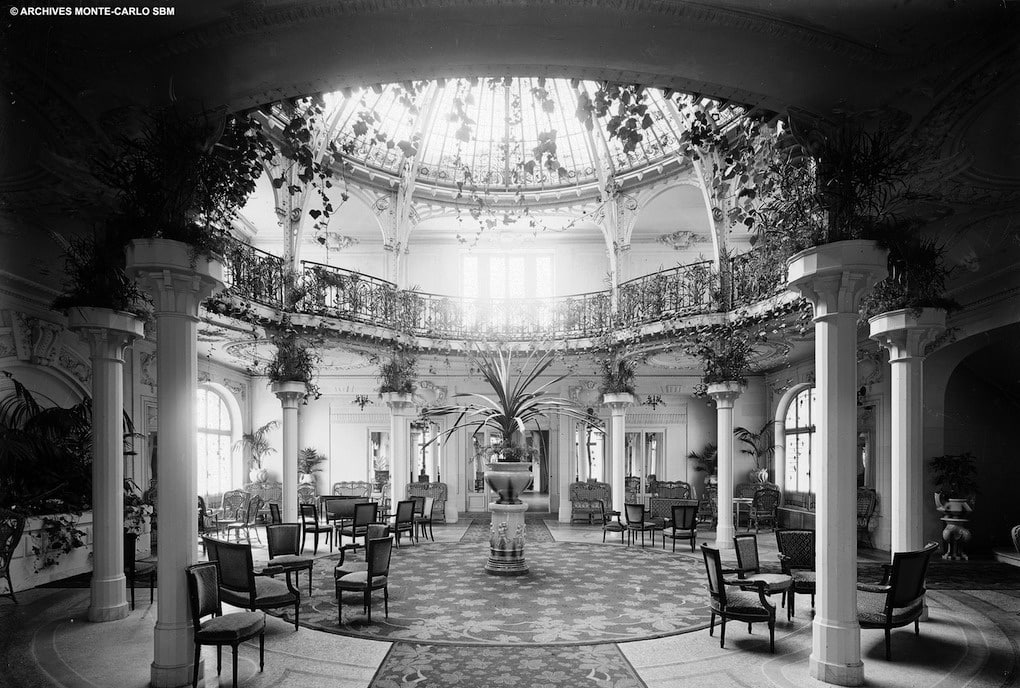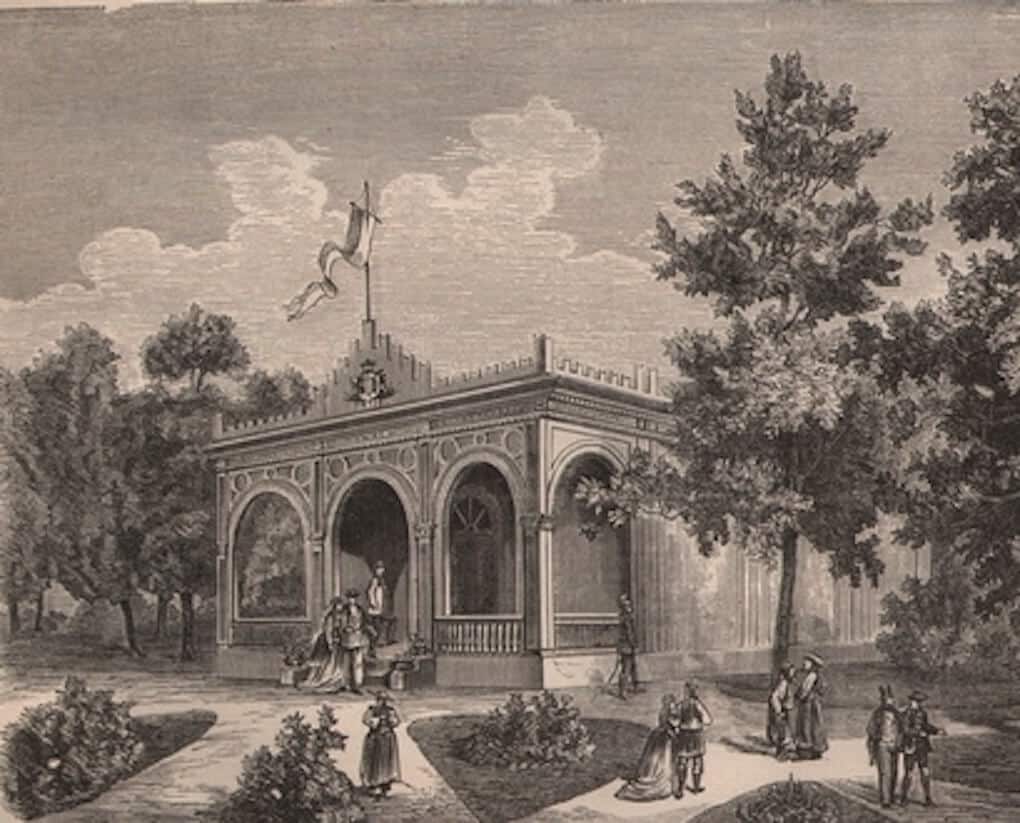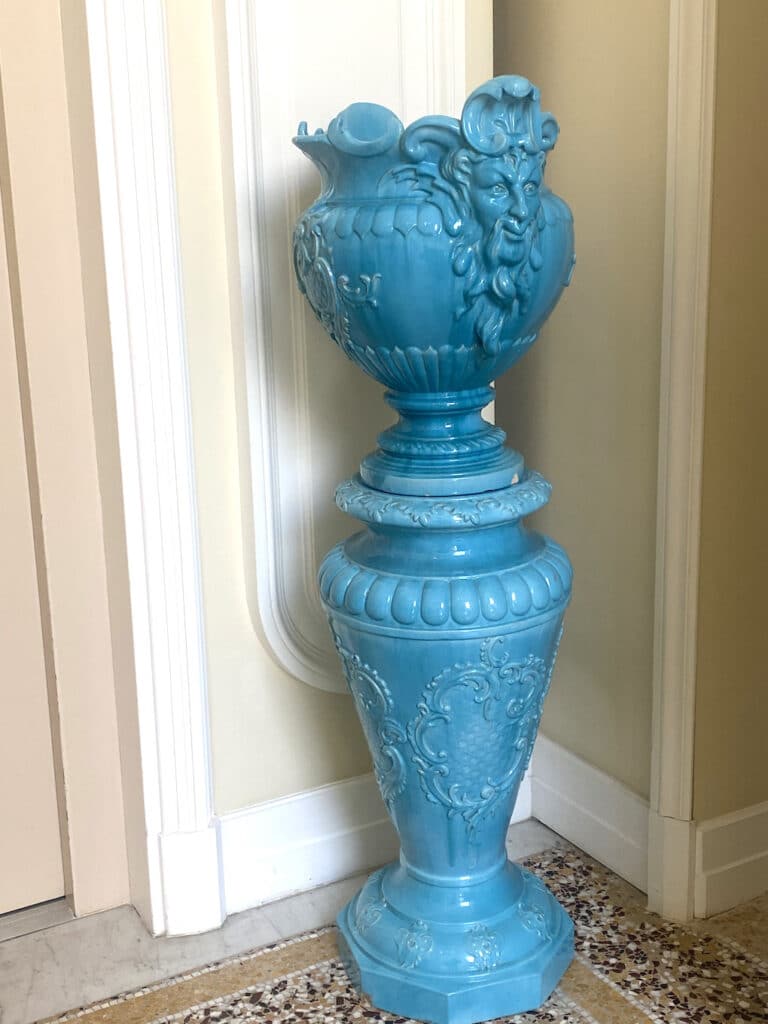Monaco’s ceramics: a heritage unlike any other

Made in the Principality or on the Côte d’Azur, these ceramics are an integral part of the Société des Bains de Mer’s heritage.
Vienna, 1873. The Austrian capital hosted the prestigious Universal Exhibition, with the participation of the Principality of Monaco for the first time as a nation.
“In the middle of this immense park, there is a charming pavilion,” René de Pont-Jest wrote in Le Figaro at the time. “There, in a little garden of eleven to twelve hundred square metres, we first of all see the fabulous tropical flora that is one of Monaco’s treasures: gigantic aloes, mandarin oranges, Japanese medlars, Madagascar periwinkle (…) Then a thousand objets d’art bear witness to the good taste and talent of Monegasque artists: boxes made from exotic wood, decorated with ivory mosaics, planters decorated with gilded bronzes, a fabulous agate cup (…) and above all, a superb collection of artistic ceramics.”

And Monaco owed this “superb collection of ceramics”, naturally, to Marie Blanc . Two years before the Universal Exhibition, François Blanc’s wife created the Société Industrielle et Artistique (Industrial and Artistic Society).
A chemistry laboratory for pharmacy and perfumery was set up in La Condamine, in the former Hôtel des Etrangers, and was managed by M. Lalande, a chemist. It produced carob paste, eucalyptus essences, orange blossom water, “Cologne” water, “La Gallia” liqueur with coffee oil and cinchona, as well as different powders and ointments. Vials of olive extract and balsamic tinctures were also produced.
But Marie Blanc did not stop there: an artistic ceramics workshop was set up above the Casino gardens, between Monaco and France, in Léon de Sigaldi’s former property. The soil provided the craftsmen with their raw material: clay.
The success of ‘La Poterie de Monaco’
Unfortunately, however, at the time of the Universal Exhibition, the Monegasque premises were not yet ready and Marie Blanc was less than impressed with the local craftwork. The ceramics presented at the exhibition actually came from a workshop in Oloron-Sainte-Marie, in the Pyrenees, belonging to the Fischer couple, associates of Marie Blanc.
The Monaco Pavilion nevertheless caused a sensation. The jury awarded three medals to the ceramics and expressed its wish to visit the workshops and congratulate the creators. Orders were even received from visitors and museums in Germany and Russia. The project took shape: Charles Fischer drew up the plans for the Monegasque ceramics workshop and became its manager.
The first kiln in the Poterie artistique de Monaco wasn’t fired up until February 1874. It produced coloured stands, vases and pots. “The blue of the Mediterranean, or Monaco blue, inspired the potters. But the ceramics were also available in other colours. Green, for instance,” explains Charlotte Lubert, SBM’s Heritage Manager.


The Fichers were talented managers of what became a successful factory. Marked with a recognisable stamp, the ceramics even featured in a regional competition in Nice, as reported in the Journal de Monaco no. 825 of 14 April 1874.

The Monaco ceramics’ stamp – © Monte-Carlo SBM
“The premises, located in the old Sigaldi estate, in the middle of a veritable forest of olive and lemon trees, are very picturesque. It is a long building, one end of which is used for artistic techniques and the other for the kilns. It is most curious to see how easily and artistically a shapeless piece of clay is transformed into a pretty vase or baskets full of flowers,” the document says.

In light of its success, Marie Blanc expanded the premises by buying land from the Duke of Valmy. A drawing school, a marquetry workshop, a shop selling the Société Industrielle et Artistique’s products, a dairy and horticultural farm, and reception and exhibition areas for the resident artists were also part of the complex.
Ceramics still in private gardens today
The Industrial and Artistic Society’s business was wound up in 1892, at the behest of Marie Blanc’s heirs. In 1907, however, a new ceramics factory was built on the quay under the Avenue de Monte-Carlo, and inaugurated by Prince Albert I. It was run by Eugène Baudin and produced ceramics up until it ceased trading in 1924.

Unfortunately little is left today of what was produced. “You can still see a lot of ceramics in private gardens in Monaco,” says Charlotte Lubert.
The Hotel Hermitage still has a few pieces, which were sold along with the premises in 1928. Although they were not made at the Poterie de Monaco, but come from the Massier de Vallauris dynasty – a dynasty with close ties to Monaco – they have, in the words of the SBM, “heritage value for the history of ceramics.”















